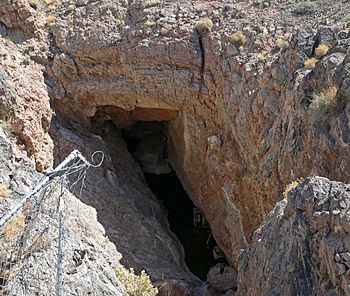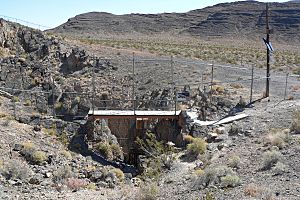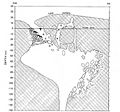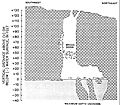Devils Hole facts for kids
Devils Hole is a geologic formation located within the Ash Meadows National Wildlife Refuge, in Nye County, Nevada, in the Southwestern United States.
Devils Hole, a detached unit of Death Valley National Park, is habitat for the only naturally occurring population of the endangered Devils Hole pupfish (Cyprinodon diabolis). The 40 acres (16 ha) unit is part of the Ash Meadows complex, an area of desert uplands and spring-fed oases that was designated as a National Wildlife Refuge in 1984.
Contents
Description
Devils Hole is a geothermal pool within a limestone cavern in the Amargosa Desert in the Amargosa Valley of Nevada, east over the Amargosa Range and Funeral Mountains from Death Valley. It is at an elevation of 730 m (2,400 ft) above sea level and the water is a constant temperature of 33 °C (91 °F). The surface area of Devils Hole is about 22 m long by 3.5 m wide (72 ft long by 11.5 ft wide). Approximately 0.3 m (0.98 ft) deep on one end of Devils Hole is a small rock shelf of 3.5 by 5 m (11 by 16 ft). The dissolved oxygen of the water is 2.5–3.0 ppm up to around 22 m (72 ft) in depth, though the shallow shelf can have dissolved oxygen levels as high as 6.0–7.0 ppm in June and July.
Devils Hole branches into caverns at least 130 m (430 ft) deep, whose bottom has never been mapped. According to geologists, the caves were formed over 500,000 years ago. The pool has frequently experienced activity due to far away earthquakes in Japan, Indonesia and Chile, which have been likened to extremely small scale tsunamis.
Pupfish
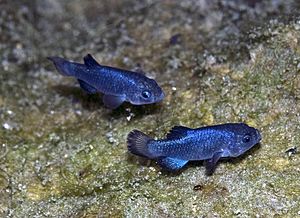
Devils Hole is the only natural habitat of the Devils Hole pupfish, which thrives despite the hot, oxygen-poor water. Devils Hole "may be the smallest habitat in the world containing the entire population of a vertebrate species". The pupfish are considered critically endangered by the IUCN. The pupfish has been described as the world's rarest fish, with a population of less than 200 since 2005. Genetic information indicates that the pupfish species is as old as the Hole itself, which opened to the surface about 60,000 years ago.
The pupfish have been protected since being declared an endangered species in 1967. Conflicts of the ownership and use of the groundwater around Devils Hole caused litigation in the 1980s. The litigation triggered further protections of the pupfish. However, since the late 1990s, the pupfish population has substantially decreased. The reasons for the decrease are unknown, but is possibly due to a microscopic non-indigenous diving beetle that is consuming pupfish eggs.
Images for kids
See also
 In Spanish: Hoyo del Diablo para niños
In Spanish: Hoyo del Diablo para niños


